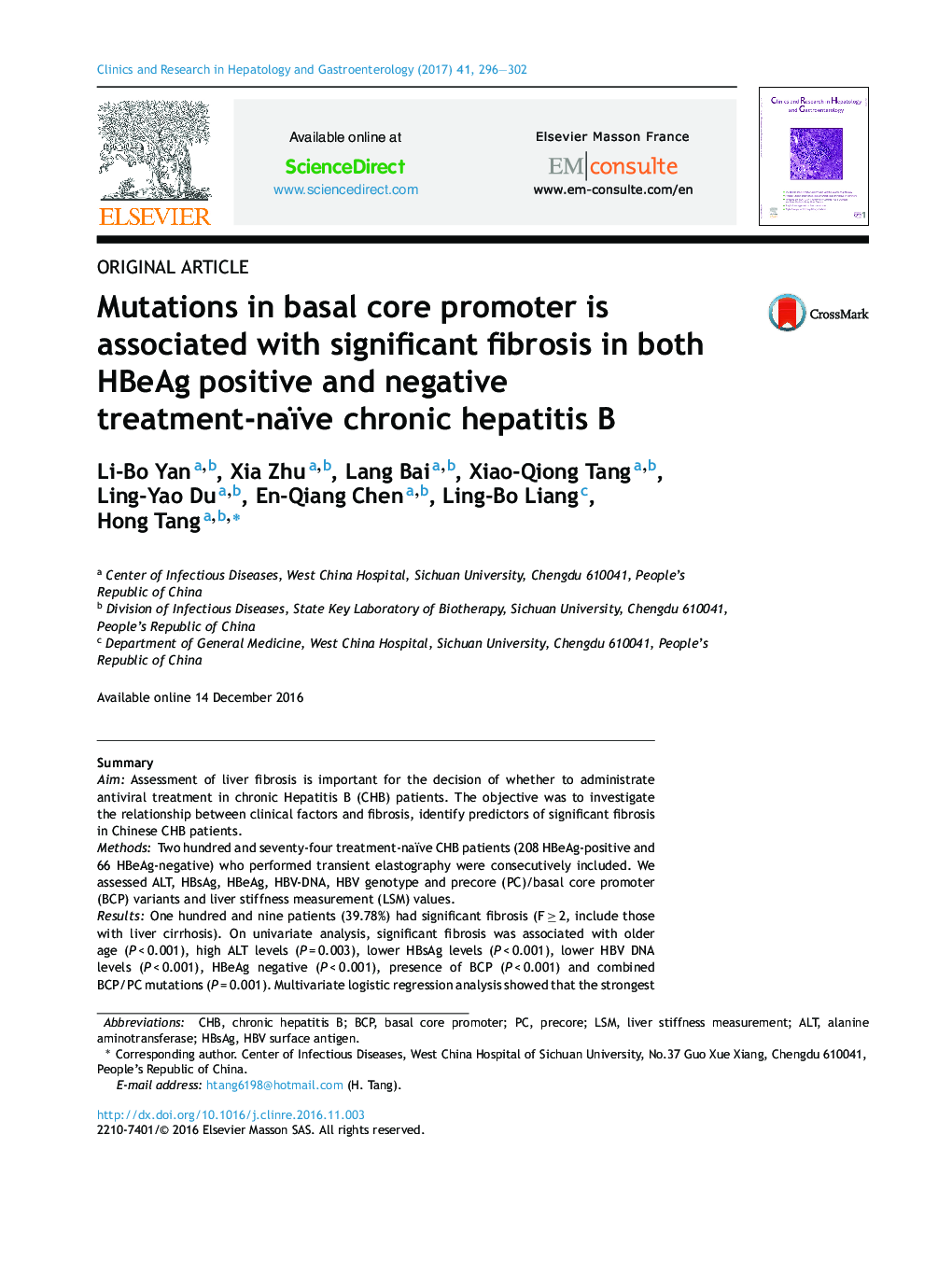| Article ID | Journal | Published Year | Pages | File Type |
|---|---|---|---|---|
| 5657875 | Clinics and Research in Hepatology and Gastroenterology | 2017 | 7 Pages |
SummaryAimAssessment of liver fibrosis is important for the decision of whether to administrate antiviral treatment in chronic Hepatitis B (CHB) patients. The objective was to investigate the relationship between clinical factors and fibrosis, identify predictors of significant fibrosis in Chinese CHB patients.MethodsTwo hundred and seventy-four treatment-naïve CHB patients (208 HBeAg-positive and 66 HBeAg-negative) who performed transient elastography were consecutively included. We assessed ALT, HBsAg, HBeAg, HBV-DNA, HBV genotype and precore (PC)/basal core promoter (BCP) variants and liver stiffness measurement (LSM) values.ResultsOne hundred and nine patients (39.78%) had significant fibrosis (F â¥Â 2, include those with liver cirrhosis). On univariate analysis, significant fibrosis was associated with older age (P < 0.001), high ALT levels (P = 0.003), lower HBsAg levels (P < 0.001), lower HBV DNA levels (P < 0.001), HBeAg negative (P < 0.001), presence of BCP (P < 0.001) and combined BCP/PC mutations (P = 0.001). Multivariate logistic regression analysis showed that the strongest independently associated predictors of significant fibrosis (F â¥Â 2) were the presence of HBV BCP mutations (P < 0.001) and older age (P < 0.001), followed by presence of lower HBsAg (P < 0.001), higher ALT levels (P = 0.006), PC mutations (P = 0.011). The diagnostic accuracy of the combination (age, ALT, HBsAg, BCP/PC variants) model with an area under the receiver-operating characteristic curve of 0.819 (cut-off value was 0.349, P < 0.001, 95% CI 0.731-0.914) in predicting significant fibrosis.ConclusionsWe identified four independent risk factors (age, ALT, HBsAg, HBV BCP/PC variants) in predicting significant fibrosis. HBV BCP variants was the strongest predictor of significant fibrosis. The combination of these four variables may facilitate the assessment and management of fibrosis in HBV infected patients.
